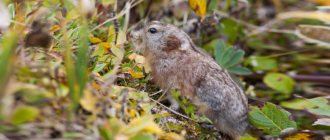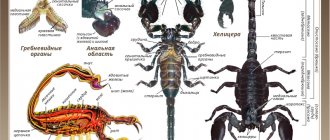№1
Lynxes look small compared to tigers and lions. In length (without tail), they reach 80-100 centimeters. The tail adds about 10-20 centimeters to the cat. Their body weight is in the region of 10-20 kg.
All lynx species found in Asia and Europe are larger than those found in North America.
The largest species is the Common Lynx. It reaches a length of 80 to 110 centimeters (excluding the tail) and has a body weight of about 15-29 kg.
The smallest species is the Red Lynx. It reaches no more than 80 cm in length and weighs only about 6-11 kg.
Lynx habitat
The territory where the lynx lives is the north; sometimes it lives even beyond the Arctic Circle. The lynx's favorite habitats are dense forests, although it is found in a variety of places.
Previously, the predator was distributed throughout European territory, but in the 20th century it was exterminated in many countries. At the present time, successful attempts are being made to revive the lynx. In the Russian Federation its numbers are small.
№2
The rarest species is the Iberian lynx. This species is found only in Spain and Portugal. It is approximately 2 times smaller than the Common Lynx, so it hunts smaller animals such as hares and birds.
Today, only 300-400 individuals of this species are found in the wild. Back in the 1960s, there were about 3,000 Iberian lynxes living in the wild, but by the early 2000s there were fewer than 400 individuals.
Where do they live?
The lynx's habitat covers North America, northern and central Europe and Asia. A few local populations are found in Germany, Italy, Spain, and the countries of the Balkan Peninsula. The lynx is found in the Caucasus, Turkey, Pakistan, Iraq and Iran.
Where live
The most suitable habitat for lynxes is dense coniferous forests. The highest population density is observed in the taiga. In such natural zones as tundra, forest-tundra, forest-steppe, where open areas predominate, the animal is much less common.
Observation of predators living in the Stolby, Bashkiria nature reserves, and the Voronezh Natural Biosphere Reserve made it possible to establish that each adult occupies a forest area of up to 200 square meters. km. If there is enough prey, the plots may be smaller. The lynx leaves its habitat only in exceptional cases: in the absence of food or during a natural disaster.
№3
The Canadian, like the Pyrenean, feeds mainly on small animals: birds, mice, hares, squirrels. Hares are a favorite prey.
The Eurasian, also known as the Common, hunts not only small animals, but also larger ones, such as deer.
The red lynx mainly hunts rabbits and hares. However, when food is scarce, it will also feed on bugs, worms, etc.
These are nocturnal predators. They go out hunting at dusk, especially in areas where people are present.
Feud with foxes
Conflicts often arise between lynxes and foxes. This is due to the habit of foxes to steal food obtained by other predators. Therefore, lynxes try in every possible way to prevent bobcats from hunting on their territory.
If the fox nevertheless appears in their habitat, the lynx lures it with prey from its reserves, and itself hides nearby. Having waited for the right moment, the lynx attacks its rival. At the same time, she does not eat the killed fox, but simply leaves it at the scene of the fight.
№4
Males mature at the age of 2.5 years. Females earlier, at approximately 2 years of age.
The mating season occurs in early spring or late winter. The gestation period is from 62 to 73 days. A litter usually consists of 1-8 young. Newborn kittens are very small, their body weight is in the region of 175-400 grams.
Mother feeds babies until 5 months of age. At 10 months, the cubs become completely independent, but leave their mother only at 12 months of age.
№8
They hunt alone. As noted earlier, they do this mainly at night. Thanks to their excellent vision, they can spot prey even in complete darkness. When hunting, they also use their whiskers.
As for their hunting style, they mainly ambush and attack prey (from trees or bushes) immediately when it comes closer.
Agile Hunter
Every day an adult lynx requires about 2 kg of meat . Its diet includes hares, small rodents, birds and beavers.
It is widely believed that the lynx pounces on its prey by jumping onto it from a tree. In fact, this predator arranges a ground ambush and silently creeps up to its prey upon noticing it. Its spotted color, which looks like sun glare on the ground, helps it hide among the trees.
During a hunt, the length of a lynx's jumps can reach 4 meters . But she will not pursue her prey for long: 80 meters is the maximum distance she is ready to cover in pursuit.
Her keen hearing allows her to discern the footsteps of a person walking in the forest several kilometers away from her.
№9
This cat got its name thanks to its glowing eyes.
In Greek, Norse and North American myths, this predator is able to see what others cannot see. Lynx reveals hidden truths. As for the name, it comes from the Greek word “leukos”, meaning “white” or “bright”. Most likely the name came from the cat's glowing eyes in the dark.
How does it move?
The lynx is a fairly agile and hardy animal. She climbs trees well, climbs up mountain slopes, and can cover distances of up to 30-40 km per night in search of prey. Lynxes are one of the few cats that are not afraid of water and are excellent swimmers. During an attack, they are capable of jumping up to 4 m.
Another feature of the lynx is that when walking, its hind paws step into the tracks left by its front paws, while the animal does not move in a straight line, but in a winding snake.
№10
These are quite vocal animals. They can make various sounds similar to those made by domestic cats. Lynxes meow, scream, growl, hiss. Just like our beloved domestic cats, they can purr. Very often, mothers purr when they are caring for their offspring.
They also use facial expressions to communicate, changing the expression of their muzzle, raising or lowering their ears, etc.
GREEN EYES OF THE UNIVERSE
At the general military meeting, Lynx gave instructions to her commanders on current issues, after which they dispersed, leaving her alone with Blanc and Blixt.
“Now listen,” she began, turning to the black and white cat. “When it’s all over—and you will understand that it’s all over—take with you the people who fought on our side and fly to the place of the destruction of the Planet of Cats.” I think you haven't forgotten its coordinates yet. Tell the remaining generals to go to the surface and restore the Earth. With our technologies it won't take much time. And now the most important thing,” Lynx stood up from the throne and walked close to her commanders-in-chief, placing her hands on both of their shoulders. “My last order as Empress of the Cats is to survive.” When I leave Earth, hide as deep as you can and don't tell each other where you are, just wait. And now it’s time for me to finish what I started,” with these words Lynx headed towards the exit, but, approaching the door, she turned around and added: “Perhaps.” When we meet again, I will no longer be the same as before, but... Everything changes.
Lynx left the headquarters, the base, and then the Earth. Blanc and Blixt continued to look after her for a long time.
“Now I don’t understand anything at all,” Blanc’s voice broke the silence. “It’s just our old plan: we provoke the sorcerer, force him to expend his strength, close the path to retreat - and that’s it, the mouse has fallen into the mousetrap, as they say.”
№11
They live in dens, in rock crevices or under ledges. Such shelters allow cats to rest and not worry about being noticed by enemies. Usually, after a hunt, lynxes eat their prey away from the den, so as not to attract attention to the home of other, larger predators. The exception is feeding the offspring, when the mother takes the prey to her den.
Family life
The mating season for forest cats begins in March. During this period, they meow loudly, purr, and males fight among themselves for the attention of females.
The female's pregnancy lasts about 2.5 months . Babies are born blind - they begin to see after 2 weeks. Pits, caves, as well as inverted roots of trees and even their hollows, if they are located close to the ground, are used as shelter for newborn offspring.
Lynxes are caring parents, although outside the mating season they live mostly alone. Males participate in caring for the offspring on an equal basis with females: they obtain food for them, and later, together they teach the cubs to hunt.
№12
Despite the fact that the lynx is not the largest predator and is inferior in size to wolves and bears, their main enemy is not wild animals, but humans. Humans hunt these cats for their valuable fur and massively destroy their habitat.
Not so long ago, as we noted earlier, the population of the Iberian lynx reached 3,000 individuals. These predators were distributed throughout most of the Iberian Peninsula. However, today, thanks to human activity, there are only about 300-400 individuals left. The same applies to the Common Lynx. Although their population is not critically endangered, their numbers have declined due to loss of natural habitat.
We also recommend reading: Interesting facts about Arctic foxes
All about animals
Today, probably, there is not a single person who could not recognize a lynx. The lynx is a predatory cat that can feel comfortable in severe frost conditions, move freely along the sharp tops of rocks and at the same time feel excellent, since such climatic conditions are the most acceptable for it. The beautiful lynx has amazing ear tufts, a short tail and large whiskers.
Of course, many are interested in the question, does a lynx attack a person ? The lynx does not touch humans; only a few facts are known that indicate how a wounded lynx attacked people. In her usual state, when meeting a person in the forest, she tries to hide and not show her presence. You can also hear about lynx invading villages and attacking livestock; scientists still cannot explain this behavior of the northern cat.
Interesting facts about the feline
The lynx is a very interesting and incredibly beautiful representative of predatory cats. Interesting facts about lynx :
- Lynxes do not really like foxes and try to destroy them at the first opportunity. This is due to the fact that foxes are very cunning and love to encroach on other people's prey. When a lynx sees a fox nearby, it leaves its prey and waits for the fox to approach it, then attacks it, but does not eat it, but simply leaves it in place;
- The lynx has very sharp eyesight, and as one version says, even the coat of arms of Finland depicts a lynx, not a lion;
- Thanks to its tufts on its ears, the lynx has incredible hearing; it can hear a person’s steps several kilometers away, so catching a lynx is very difficult;
- The lynx has a rather interesting attitude towards a person, it can easily break his neck, but at the same time, it avoids people and does not attack them;
- The ancient Greeks believed that the lynx could see through objects;
- An interesting fact is that if you cut off the tassels on the ears of
- Lynx, then the acuity of her hearing will decrease significantly;
- Only one species of lynx is listed in the Red Book - the Iberian lynx due to the fact that its fur is very beautiful and soft; people chasing expensive prey actively exterminated them for a long time;
- While moving, the lynx places its hind leg in the trail of its front leg, just like wolves and tigers do;
- Before forming a pair, lynxes intensively hit their foreheads until the crunching of their bones is heard;
- Lynx never attacks from above; hiding on tree branches or on rock slopes, they track their prey or rest;
- The maximum weight of an adult male lynx sometimes reaches 30 kg, while average females weigh only about 18 kg;
- A female lynx bears offspring for about 70 days and usually gives birth to 2-3 kittens;
- Lynx kittens begin to see only 13-14 days after birth;
- A trot requires about 2 kg of meat per day;
- Lynxes prefer to eat voles;
- Mother lynx has the ability to select physical qualities from different fathers for her kittens while she is pregnant;
- Hevelius discovered a constellation called Lynx;
- A cat's jump can reach 4m in length;
- The sharpness of the lynx's teeth and claws can be compared to a blade;
- The lynx kills its prey instantly without torturing it.











